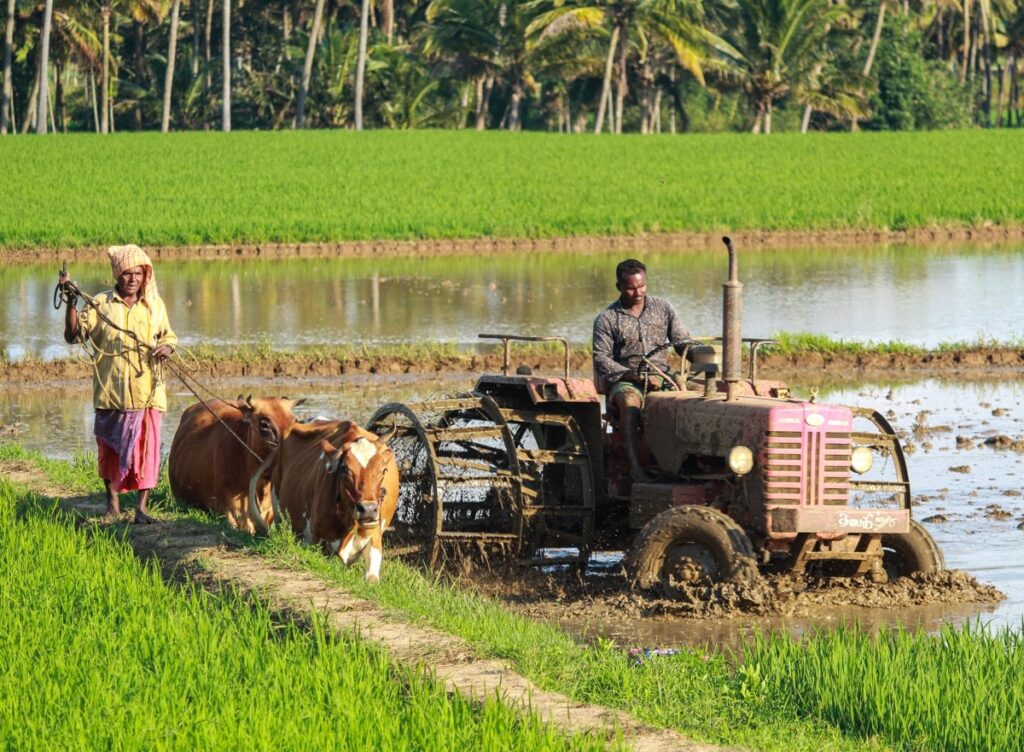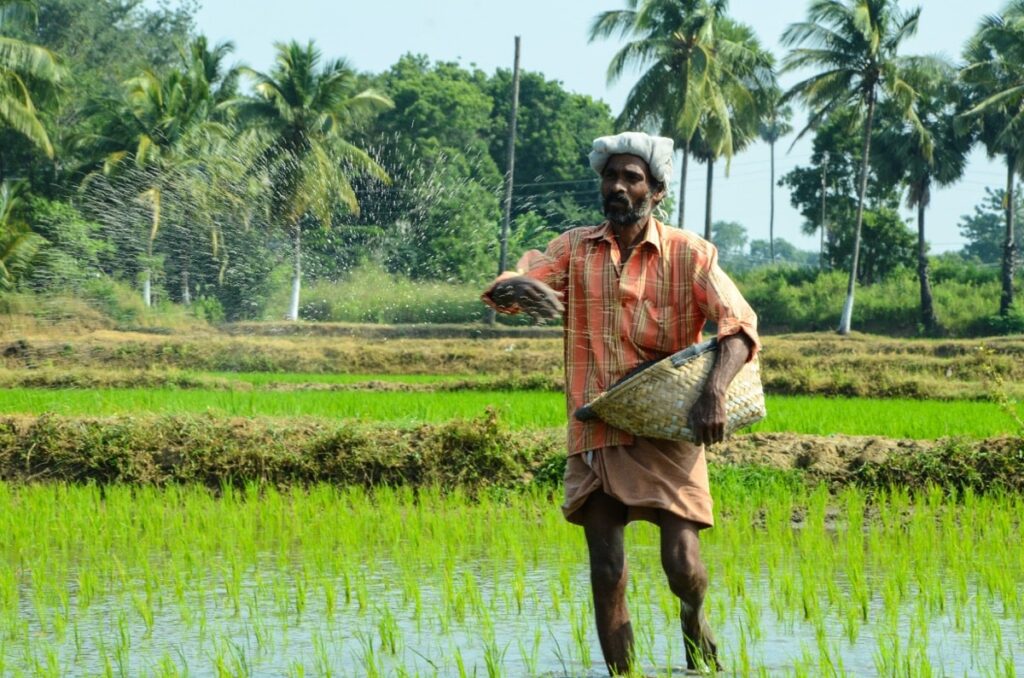Last year brought a steady rise in socially responsible fintech products that are specifically designed for the needs of the agricultural sector. Agri-fintech is a very promising segment of financial technologies, so we’re going to discuss it in detail

Image: unsplash
Applying financial technology to solving agricultural challenges is not a new concept, but 2022 put it to the forefront, as the global community tried to address financial inclusion issues in various regions.
It’s no secret that remote rural areas in many countries lack access to financial services per se. At the same time, farming is the main way to provide for households based in such regions. Technologies available today very well allow small farmers to monetise their daily efforts. However, there are still too few fintech platforms focused on the specific needs of small and medium-sized agriculture businesses.
Hence, we still observe a massive funding gap in the burgeoning agricultural sector. Discovering agri-fintech opportunities is a great chance for ESG-focused startups to cover this gap and make a change in many developing economies.
What’s Agri-Fintech?
Agri-fintech operates at the intersection of agriculture and financial technology. Basically, this particular segment of financial technologies applies to financing, marketing and logistic solutions implemented within the agricultural industry.
Thus, agri-fintech startups transform farmers’ access to rural credit, solve payment challenges in largely cash-based economies, help improve commercial experiences for both agricultural enterprises and their customers, and scale the understanding and mitigation of the industry risks.
While the fintech industry is already booming, the agricultural vector of its future development may uncover a huge yet ignored potential. In fact, agriculture represents one of the largest global markets that’s still awaiting financial disruption.
Traditionally, the agriculture industry financing is dominated by a few large global players. However, only because legacy institutions are historically well-positioned to assess and manage the peculiarities of the sector, it doesn’t mean that farmers’ needs can’t be better addressed by smaller and more innovative fintech startups.
Market Size and Opportunities
The aspects and target industries where most fintech is focused today represent only a fraction of the $23 trillion-worth global financial services market, set to reach $37 trillion by 2026.
Back in 2015, McKinsey estimated that food and agribusiness formed a $5 trillion global industry quickly developing to satisfy the needs of a growing human population. In seven years, it has more than doubled. By the latest estimations, the global agriculture market grew from $12,2 trillion in 2022 to $13,4 trillion in 2023 at a compound annual growth rate (CAGR) of 9.4%.
Yet, that number is only the tip of the iceberg, as there are numerous industries directly dependent on farming such as food services or textiles. They all greatly contribute to the GDPs of world-leading economies. Moreover, in emerging markets, the share of agriculture and related industries in the national economic growth can reach as high as 25%.
At the same time, the industry faces many challenges. Let’s not forget the Russian invasion of Ukraine which has been going on for almost a year now without any signs of easing, has affected global agriculture with economic sanctions, a surge in commodity prices, and supply chain disruptions. Both countries involved have been major exporters of agricultural products to developing economies.
In daring times like these, global agricultural patterns are shifting. The industry SMEs require intensive investments and technological innovation like never before. That’s where agri-fintech steps in.

Image: unsplash
Where Agri-Fintech Grows the Most
Rapid development of agri-fintech trends is especially vivid in those regions where its impact is most desired and profound. First and foremost, these are the countries of Africa, which saw 7.5x increase in agri-fintech venture funding in 2021; India, where agriculture continues to be the biggest contributor to national GDP; and the Middle East with its pressing food security concerns.
Here are some examples of robust agri-fintech scenes in separate regions.
Nigeria
Agriculture contributed 21.09% to nominal GDP of Nigeria in the first quarter of 2022. In different periods of 2011-2022, this share variated from 20% to almost 30%. The vast majority of agricultural produce in the country (90%) is brought in by smallholder farmers, who still struggle to secure the financing they need to invest in their farms and improve production.
Therefore, there’s a cohort of agri-fintech startups that have sprung out in the country to solve this issue throughout the past few years.
ThriveAgric – founded in 2017, the company received the grand prize of the 2022 Visa Everywhere Initiative (VEI), recognised for its ingenuity in applying technology to solving agricultural challenges. The firm developed a proprietary technology called the Agricultural Operating System (AOS) that assists smallholder farmers in accessing finance, as well as enables harvest storage in corporate warehouses before commodities are digitised and offered to local and global trade markets at a premium price.
Agrorite (2019) provides a digital agriculture platform combining financing, aggregation, food processing and trading, commodity trading, agricultural technology, and insurance solutions.
HerVest (2019) focuses on underserved and excluded small holder female farmers in Africa, providing access to financial services and products, including savings, impact investing and loans.
AgroMall (2016) facilitates digital agriculture finance, enhances production, reduces post-harvest losses and improves access to markets for Nigeria’s smallholder farmers.
India
India has 126 million smallholder farmers and despite the governmental PSL (priority sector lending), credit opportunities for this category are still scarce and hard to obtain. At the same time, the country’s $370 billion agriculture sector has welcomed many tech innovations in the past decade. Things like AI-powered grain sorting machines, online marketplaces, crop and soil sensors, and digitally-enabled logistic tools help farmers reduce losses and wastage.
Agri-tech startups in India have also witnessed unprecedented growth. Leveraging 4G connectivity, dedicated fintechs created farmer platforms, B2B agri marketplaces, rural fintech businesses, and farm-to-consumer (F2C) brands. Here are some of the country’s agri-fintechs that try to make farmers’ lives easier and help them build more wealth.
Jai Kisan (founded in 2017)- enables individual farmers and farming enterprises to purchase farming equipment at favourable interest rates, while building their credit score. Loans are provided against productive assets repossessed in case of default.
Arya.ag (2013) – has 10,000 warehousing facilities across 25 states, located close to the farm gate. This network allows a farmer to store harvest in a nearby warehouse and wait for a few months post-harvest to obtain much higher sale prices. Finding a storage facility and connecting with sellers happens in-app. There farmers can also apply for a low-interest quick business loan.
Whrrl (2019) – also provides warehousing facilities to farmers and loans against the stored commodities. However, it stands out among similar startups by using blockchain to tokenise warehouse receipts. This technology helps to minimise fraud, duplication and lending beyond capacity.
Hesa (2019) uses a ‘phygital’ approach to connect corporates, banks, governments and NGOs with last-mile rural customers. While the B2B digital platform connects two enterprises online, a village-level entrepreneur called a ‘Hesaathi’ serves end customers in the old-fashioned personal way.

Image: unsplash
Why Agri-Fintech Is on a Rise
Global economic disruptions such as the Covid-19 pandemic in 2020 and the Russian-Ukrainian war in 2022 have illustrated the many ways worldwide supply chains may become dysfunctional. Hence, many developing economies are currently reconsidering their dependence on imports when it comes to vital agricultural production.
In many states, agriculture as a sector lacks not only purely technological innovations but also access to innovative financing means. Thus, small and medium-sized agriculture businesses in sub-Saharan Africa are facing a $74.5 billion funding gap.
The development of agricultural sectors in emerging markets is stalled by legacy payment means, highly bureaucratic access to credit which ignores the needs of underserved citizens, and lack or absence of governmental support initiatives.
Meanwhile, ESG and sustainable finance initiatives are currently the top priority for the financial services firms as well as many VC investors.
Agri-fintech has the potential to significantly improve the well-being of many rural communities, facilitate smallholder farmers’ access to global markets, and even help solve some food scarcity issues.
That’s why we see increased interest and funding in the sector which holds a promise to empower rural entrepreneurs and enrich global agricultural trade.









